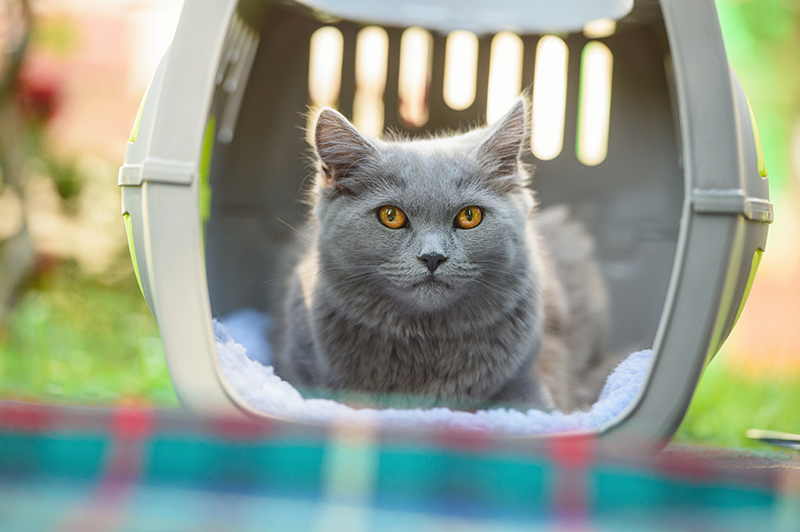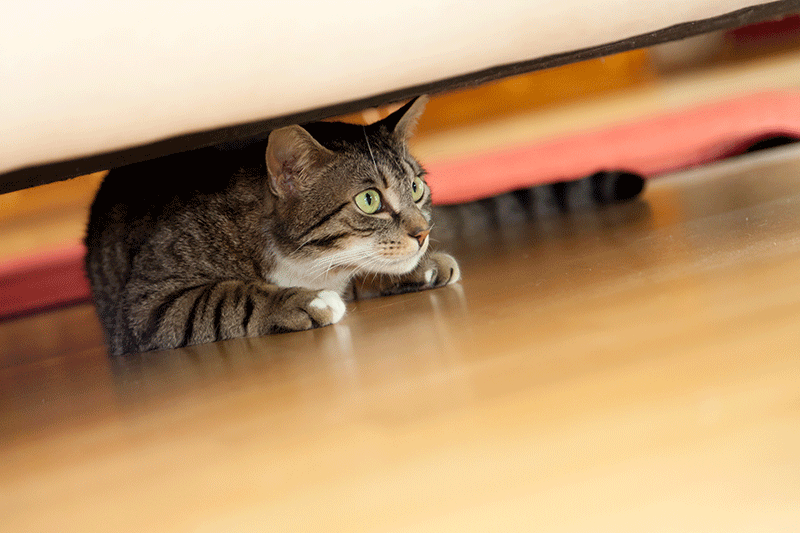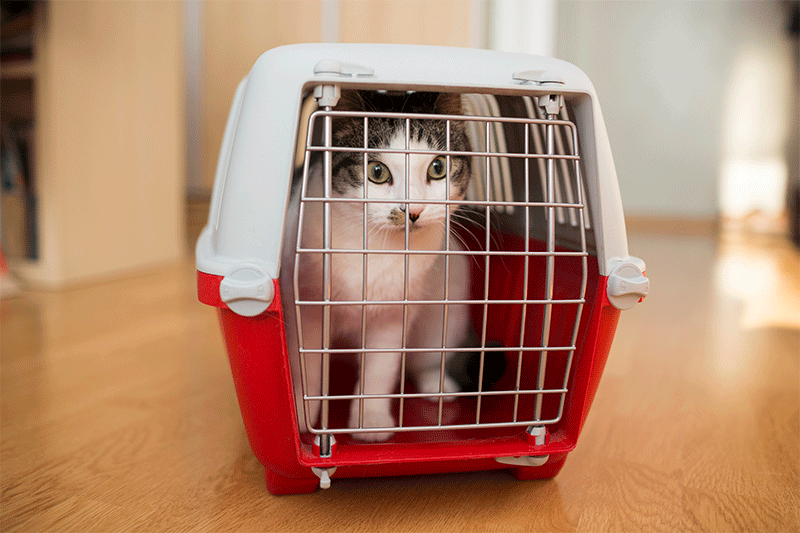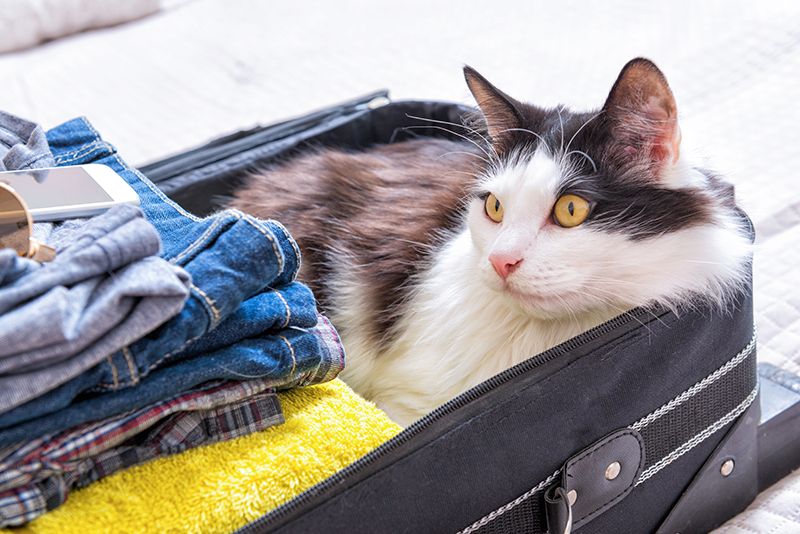How to Travel with a Cat
Many of us like to take our furry friends along when we travel. Whether by airplane, train, or car, any kind of travel can upset your cat and cause stress behaviors. Unfamiliar, confined environments can be stressful to your otherwise well-behaved pet, and spending time in unfamiliar spaces could add to that. These helpful hints for traveling with cats can reduce stress and help you and your cat be happier on the journey.
Update Your Cat's IDs
Make sure your cat's ID tags are up to date, and if she isn't microchipped, you might consider talking to your vet about this. Make sure you register your microchip online before you leave.1 Cats that get stressed out in a new—even temporary—environment might want to flee, so make sure you have all the tools in place for others to help her find her way back to you.
Locate a Vet Where You're Vacationing
Do a little research before you leave to find the nearest vet or 24-hour emergency animal clinic in the town or city you're visiting. Bring your vaccination records with you just to be safe.
How to Travel with a Cat on a Plane
If you're flying with your cat or kitten, check with the airline well in advance of your departure date to determine the rules, regulations, and extra costs when traveling with pets—and if they allow pets in the first place. For example, United Airlines requires cats to be at least 16 weeks old to travel,2 while American Airlines has some breed restrictions.3 You don't want any surprises at the airport!
The same applies if you're traveling by train. Many train or public transit lines don't allow pets—even in carriers—so refer to those transportation entities' websites for more information.
If possible, talk to your airline about flying with your cat in the cabin with you rather than in the cargo hold. Remember to bring a pet carrier, like the K&H Lookout Pet Carrier, that matches your airline's size requirements. And have a harness handy in case you need to take your cat out of the carrier for X-ray security screening.
How to Keep Your Cat Calm in a Car
If you're traveling in a car with your cat or kitten, find a good carrier that attaches to the seat belt so your cat doesn't shift and move while you're on the road. One example is the Backpack Pet Carrier, which you can wear once you've arrived. Another great option is the Mod Capsule. This can be both a car carrier and a bed.
Take short, "trial run" drives before you start out on your long drive. Your cat will need some practice, and you'll want to figure out what makes your cat nervous. Does loud music upset your kitty? Does he need a blanket over the carrier to keep out unfamiliar sights? Does a podcast help calm him down?
Regardless of the outside temperature, never leave your cat unattended in a parked car.
Don't Feed Your Cat the Morning of Any Trip
Don't feed your cat on the morning of the trip. Cats can get carsick or have other nervous "accidents," and an empty stomach might just be their best traveling companion! This applies no matter how you're traveling—whether by airplane, car, or train.
Use a Calming Diffuser
Use Comfort Zone Spray & Scratch Control Spray at least 15 minutes before putting the cat inside the cat carrier. Spray the inside of the carrier: one to two sprays in each corner, on the floor, and on the ceiling. Comfort Zone products release an odorless vapor that mimics your cat's natural calming pheromones.
Before you leave, snap a Comfort Zone Calming Collar around your kitty's neck. Be sure the collar fits snuggly with no more than two fingers' width between the cat's neck and the collar. The collar releases those same calming pheromones as the control spray, and they work well together. The collar also has a quick-release feature in case your cat becomes entangled.
Cats' stress levels are affected by new or unfamiliar scents and spaces, and you won't want her to start spraying or scratching the furniture where you're visiting. Bring along a Comfort Zone Calming Diffuser to use in a friend's or family member's home, or even in your hotel room.
Pack Travel Bowls & Travel Litter
Whichever travel method you use, don't forget to pack portable food and water bowls. You also want to bring a supply of your cat's preferred food rather than relying on a new brand where you're visiting. Cats can get upset stomachs from a sudden food change, and you want to avoid the extra stress.
Pack Familiar-Scented Items
Cats sometimes have trouble adjusting to new surroundings. In addition to a calming diffuser, bring items with scents of home to help your cat feel more comfortable. Pack his favorite cat bed or his favorite blanket or toy.
Giving your cat a calm and stress-free travel experience begins long before you get on the road. You need to plan ahead and do your research, but having a happy kitty will make it all worthwhile.
1. Animal Humane Society. "Registering Your Pet's Microchip." AnimalHumaneSociety.org, https://www.animalhumanesociety.org/adoption/registering-your-pets-microchip.
2. United Airlines. "In-Cabin Pets." United.com, https://www.united.com/ual/en/us/fly/travel/animals/in-cabin.html.
3. American Airlines. "Pets." AA.com, https://www.aa.com/i18n/travel-info/special-assistance/pets.jsp.




